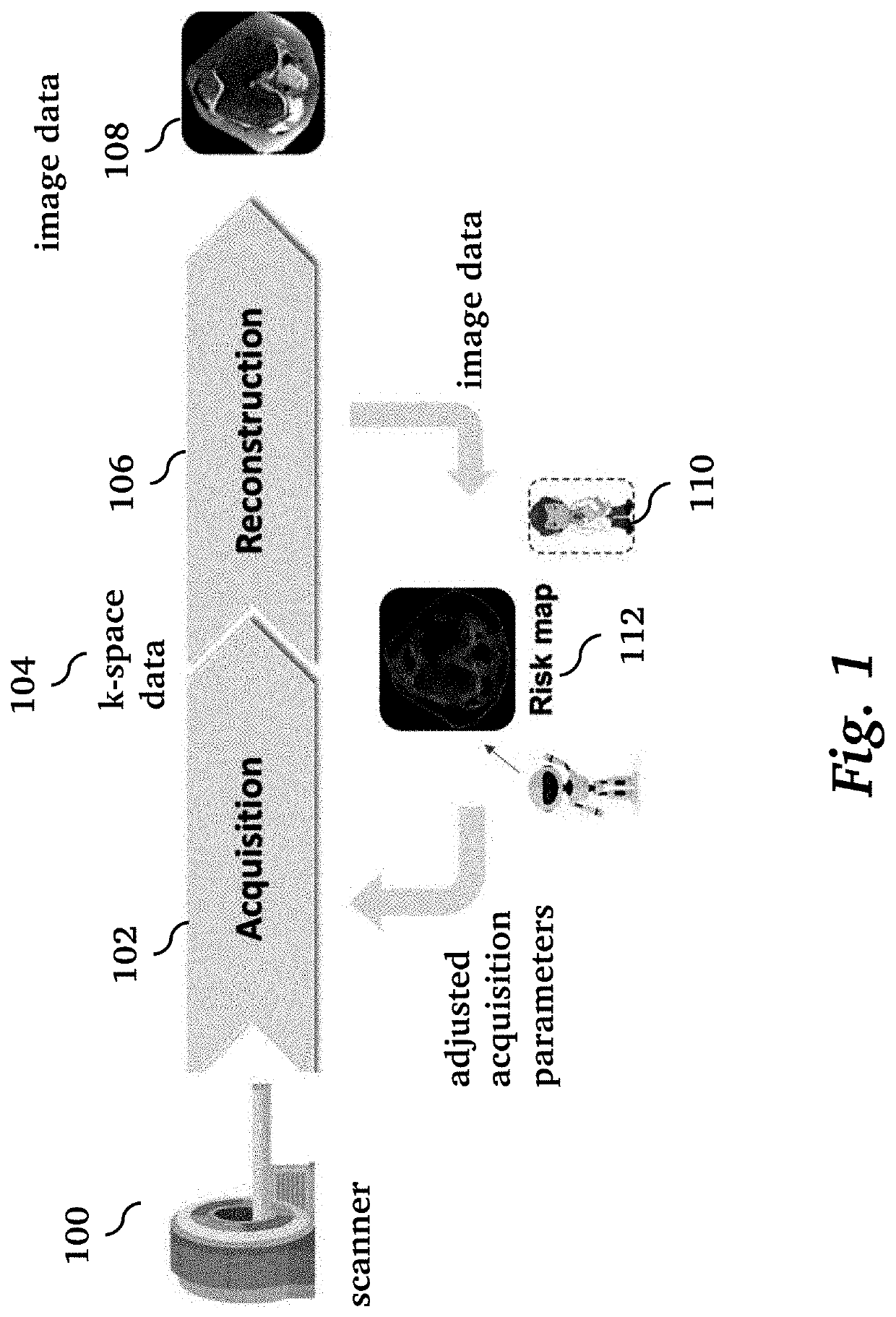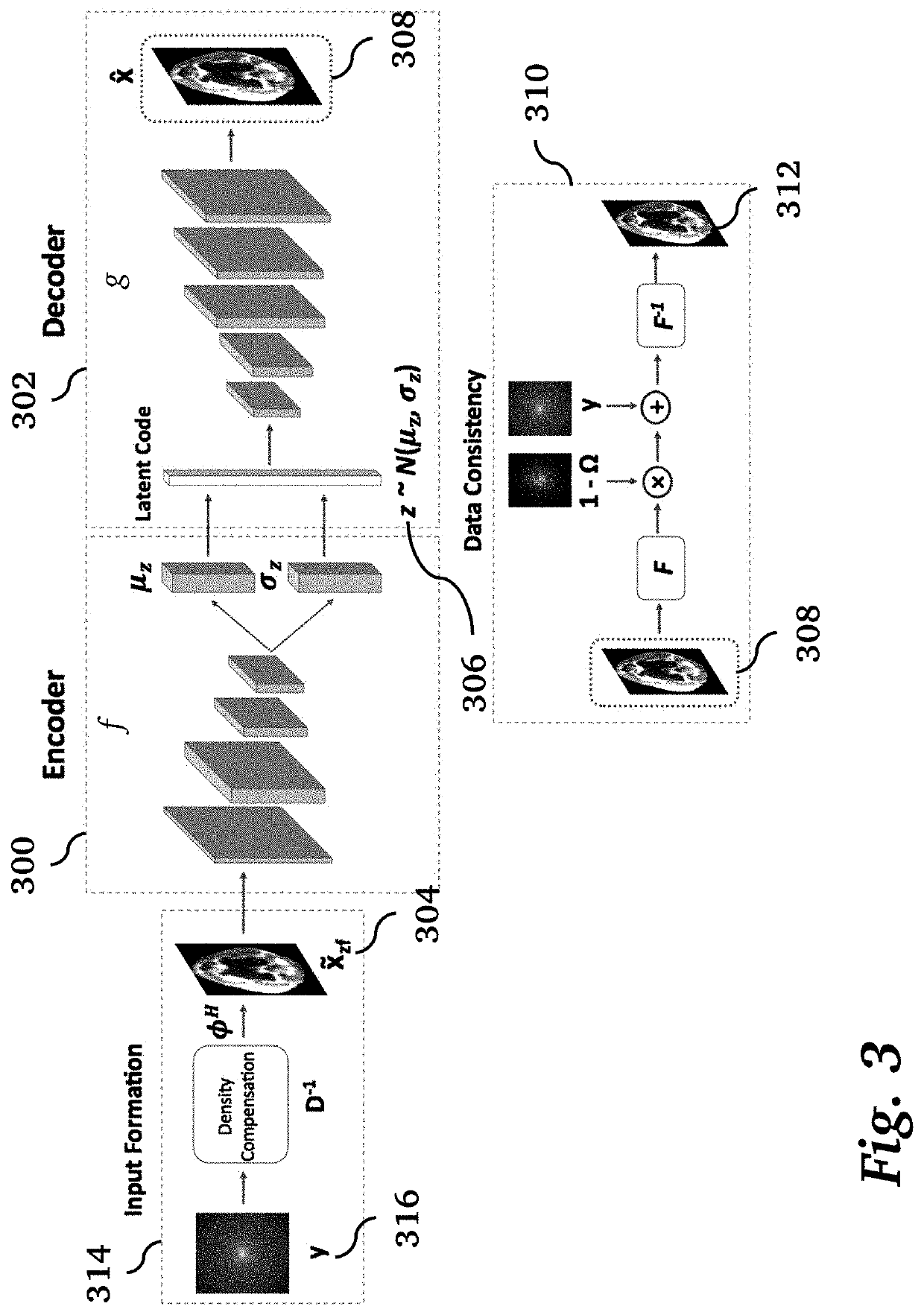Methods for Risk Map Prediction in AI-based MRI Reconstruction
a risk map and reconstruction technology, applied in the field of image reconstruction in medical diagnostic imaging, can solve problems such as quantitative generalization risk, and achieve the effects of reducing prediction uncertainty and risk, quantitative uncertainty in image recovery, and increasing uncertainty
- Summary
- Abstract
- Description
- Claims
- Application Information
AI Technical Summary
Benefits of technology
Problems solved by technology
Method used
Image
Examples
Embodiment Construction
[0027]Given the pernicious effects that the presence of image artifacts can have, reliable uncertainty quantification methods could have utility both as an evaluation metric and as a way of gaining interpretability regarding risk factors for a given model and dataset [8]. In principle, a radiologist could consider a combination of uncertainty heat maps and the scan being analyzed to make better informed interpretations overall. Additionally, uncertainty information could be leveraged in real time to inform the optimal measurements to acquire during scanning, or alternatively, separate models could be applied in a targeted fashion to enhance quality in specific regions of the image. For example, FIG. 1 illustrates a processing pipeline for clinical operation of diagnostic medical imaging. A medical imaging scanner 100 performs an acquisition 102 to acquire k-space data 104, followed by image reconstruction 106 to produce an image 108 that typically contains artifacts. Traditionally, ...
PUM
 Login to View More
Login to View More Abstract
Description
Claims
Application Information
 Login to View More
Login to View More - R&D
- Intellectual Property
- Life Sciences
- Materials
- Tech Scout
- Unparalleled Data Quality
- Higher Quality Content
- 60% Fewer Hallucinations
Browse by: Latest US Patents, China's latest patents, Technical Efficacy Thesaurus, Application Domain, Technology Topic, Popular Technical Reports.
© 2025 PatSnap. All rights reserved.Legal|Privacy policy|Modern Slavery Act Transparency Statement|Sitemap|About US| Contact US: help@patsnap.com



